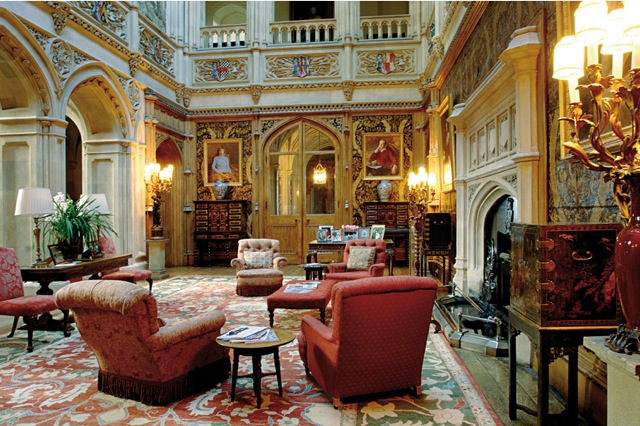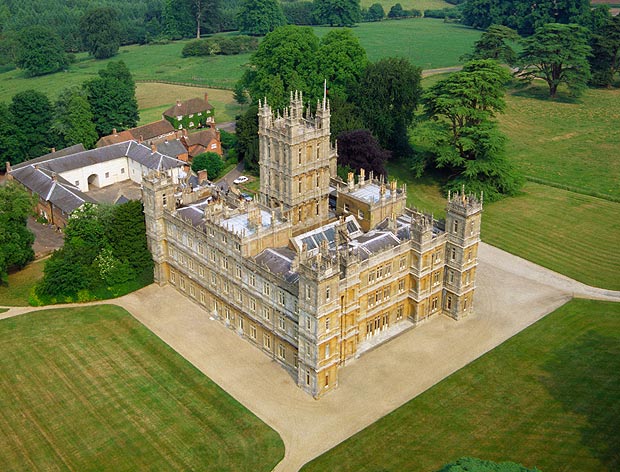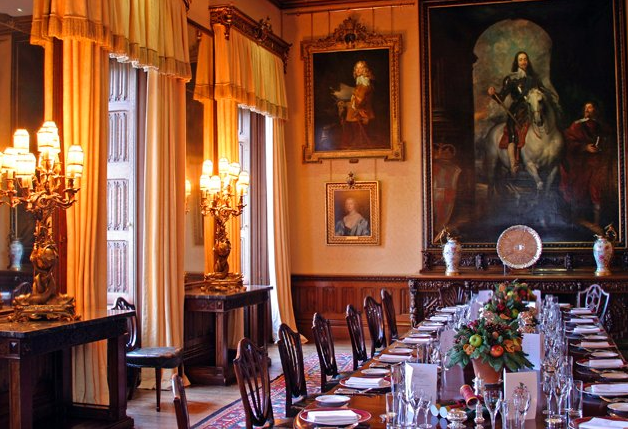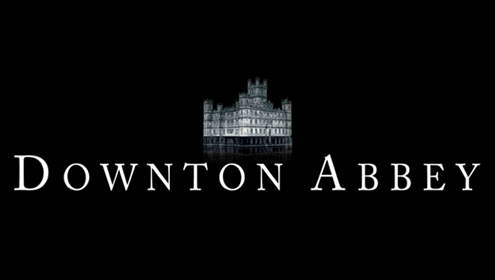Highclere Castle - The Real Life Downton Abbey



Highclere Castle is used as the location for filming the interior and exterior sets of Downton Abbey. The 5,000-acre estate is in Hampshire, England, United Kingdom, about 5 miles south of Newbury, Berkshire. There are 11 bedrooms on the first floor, some of which can be seen by visitors, and 40-50 on the next floors which are no longer used and cannot be viewed by visitors. One hundred years ago perhaps 60 members of staff were living in and around the Castle. As architect Sir Charles Barry said of his design for Highclere Castle, the house was based on three qualities: love of extravagance, love of the past, and love of ancestry.
The Saloon (pictured above) is physically and socially the heart of the house. It was designed for the 4th Earl by Thomas Allom in a gothic style with rich decoration and completed in the 1860's. Many of the walls of Highclere are adorned with antique wall coverings, such as those of the Saloon, the heart of Highclere. The Saloon’s walls display splendid 16th century, gold-embossed leather, brought from Spain in 1631 by the 3rd Earl. The Saloon is actually a three-story atrium, almost 100 feet high (30 meters), with skylights. The saloon mirrors Barry's 1840s plan for the entire house, with emphasis on extravagance and ancestry, and provides a dramatic backdrop for many scenes in Downton Abbey, including the family and staff's gathering to acknowledge the end of World War I.
The State Dining Room is dominated by Van Dyck's great equestrian portrait of Charles I. Either side are portraits of Carnarvon ancestors who took part in the civil war in England in the 1640’s. The State Dining Room is in the Stuart Revival style of interior decoration. The multitude of family portraits on the walls of the Highclere Castle dining room emphasize the owner's celebrated ancestry and influential relatives. These ancestors look down on the dinner parties and gatherings of their descendants, as these descendants look back at the portraits and feel all the more connected to their roots and inspired by their heritage.
